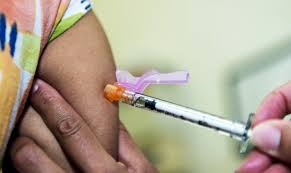Why Vaccines Are So Important

Vaccinations have saved millions of lives by eradicating smallpox and greatly reducing cases of other deadly diseases. Yet even today, millions of Americans remain unvaccinated, ranging from diehard members of the anti-vax movement to people who simply view vaccines as too costly or inconvenient (or maybe you’ve gotten the flu already, or you got vaccinated last year, so you don’t think you need a vaccine. If so, see the Massachusetts Medical Society’s flyer about vaccination).
From the recent whooping cough (pertussis) case in Lower Merion to the reemergence of measles in the United States, the effects of the anti-vax movement can be felt on both local and national scales. To understand how vaccines—or the lack thereof—influence our health, we need to understand the science behind it.
There are two main types of vaccines: inactivated and attenuated. Inactivated vaccines contain a harmless, “dead” version of the virus or bacteria to be protected against. Our body’s immune system recognizes this attacker and learns how to defend against it, without the virus or bacteria inflicting disease in the process. The polio, flu, typhoid, cholera, and whooping cough vaccines all use inactivated viruses.
Attenuated vaccines also activate the immune system, but the weakened virus or bacteria injected is still alive and can reproduce, allowing for a faster and more durable immunity. After the immune system learns how to identify and destroy the pathogen, it can be quick and efficient when it encounters the pathogen in the environment.
Not only do vaccines directly protect our bodies, but many vaccinations build up to something called herd immunity. The basic concept is that if everyone is vaccinated and has an immunity against a disease, the disease can’t find a host and therefore can’t spread between people. It relies on a high percentage of immunity in a population, and it is especially important for immunocompromised people.
For example, a person going through chemotherapy will have an extremely weak immune system. Even if they are vaccinated and their immune system knows how to attack a pathogen, it isn’t strong enough to fight it. Meanwhile, babies are usually too young to receive all the necessary vaccinations and rely on a high percentage of immunity in a population to protect them from pathogens. Unfortunately, it only takes a few unvaccinated people to compromise herd immunity and act as vectors for the disease to spread.
Overall, the Lower Merion community is a well-vaccinated population and benefits from herd immunity, but cases of pertussis still hit local news every year. Although all cases of pertussis have occured in vaccinated individuals, this doesn’t mean the vaccination was ineffective. Being vaccinated greatly reduces the chance of the disease and reduces symptom severity, but people can still get sick when their immune system is weakened by other factors. It is important to vaccinate so that a disease’s spread and effects aren’t as deadly.
Vaccinations for measles are extremely effective, even more so than pertussis vaccines: two doses of the measles vaccine has a 97% effectivity rate. Yet in 2015, 15 years after measles was declared eradicated from the United States, an immunocompromised woman passed away from the disease. A series of significant outbreaks occurred.
Between January and July 2008, 131 cases from 15 states were reported in the U.S., compared with the average of 63 cases per year during the 2000-2007 period. Out of these 131 cases, 91% of were unvaccinated, and 80% were minors. These extreme outbreaks continued among unvaccinated populations, with between 80-100% of the affected population being unvaccinated.
Not getting vaccinated has a real impact on people’s lives, so it is essential that all able people be vaccinated against these deadly, dangerous diseases. Herd immunity protects babies and immunocompromised people by reducing transmission, and lack of vaccination allows for outbreaks of previously eradicated diseases to make a deadly return. Although vaccine refusal only occurs 2% of the time, all it takes is one person to transmit a disease.

